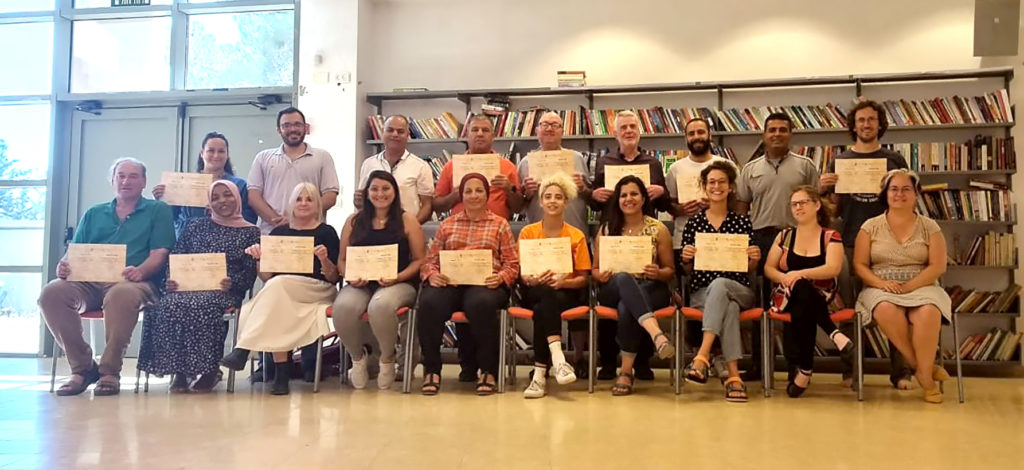Educational Tours Guiding Course about the Nakba
“Thanks to this course I fell in love with the School for Peace and decided to continue straight to the group facilitation course. I feel the connection between the courses and how they complement one another.”
By a participant of the course.
Text courtesy of “Zochrot”:
We congratulate the graduates of the Nakba Tour Guide Course that ended June 24th. The course included eleven sessions between October 2021 and June 22, with fifteen Jewish-Israeli and Palestinian participants, with background in education, culture, tours and sociopolitical activism. We are proud of the graduates for having demonstrated their skills as tour guides during the course and await future tours with them.
Titled “Change Agents for Spatial and Historical Justice in the Israeli-Palestinian Context”, the course was a collaboration with the Neve Shalom School for Peace. Its program included lectures on history, Zionism, the meaning of the Nakba, the post-Nakba design of space as a consciousness-shaping practice, and the tour as a political tool. It also featured guided tours to destroyed Palestinian locales such as al- Manshiyya neighborhood in Jaffa, Beit Sussin, al-Shaykh Muwannis, Imwas, and Lifta. The tours were designed to expand the trainees’ knowledge on the Nakba in space, as well as provide them with hands-on demonstration of how to structure and guide a tour.
The participants have applied their learning by planning and guiding a tour of their own, as practicum, in four destroyed Palestinian communities – having of course researched about them – al- Khalasa in the Negev (Naqab), Ijzim in the Carmel, al- Mirr (al- Mahmudiyya) and al- Muwaylih in the Jaffa Governorate, and al- Baq’a neighborhood in Jerusalem.
In addition to its formal learning, the group, including both Palestinians and Jewish-Israelis, underwent a process of individual and group coping with sociopolitical issues, and reflection on individual and collective attitudes, views and behaviors related to these issues. Throughout the course, the participants were engaged – in a structured and moderated manner – with dialogue, both within each national group and together. In this dialogue, they worked through and developed multiple subjects that preoccupied and challenged them following the Israeli-Palestinian encounter as well as the encounter with the spatial implications of the Nakba on identity, language, gender, power relations, justice and political solutions.
In their summary, the course participants reported on their significant process and insights. Yehudit Shefi, an Israeli Jew, wrote:
I have acquired a new way of looking at space – what I can see on the outside deliberately conceals something, as a systematic state approach. The feeling struck me, I felt “duped”, and thoroughly so. My responsibility as an individual is to examine what is hidden behind the visible, and share it with the audiences I interact with.
I had to relinquish the myth on which my generation was raised (and I would not be greatly mistaken to assume that this is true of the present generation as well). That myth turned into a story that needed to be examined, criticized, and grappled with. By “grapple” I do not mean just the philosophical-intellectual-emotional aspect, but examining possibilities for action in the reality around us.
I pause to examine the state’s policies, being part of it, then and today, whether under leftwing or rightwing government, and identify between the lines a recurring pattern of repression, erasure, and ignoring actions carried out in the past, and also in the present. As Jews, we must not perpetrate crimes under the guise of war stories, land ownership, or any other pretext.

